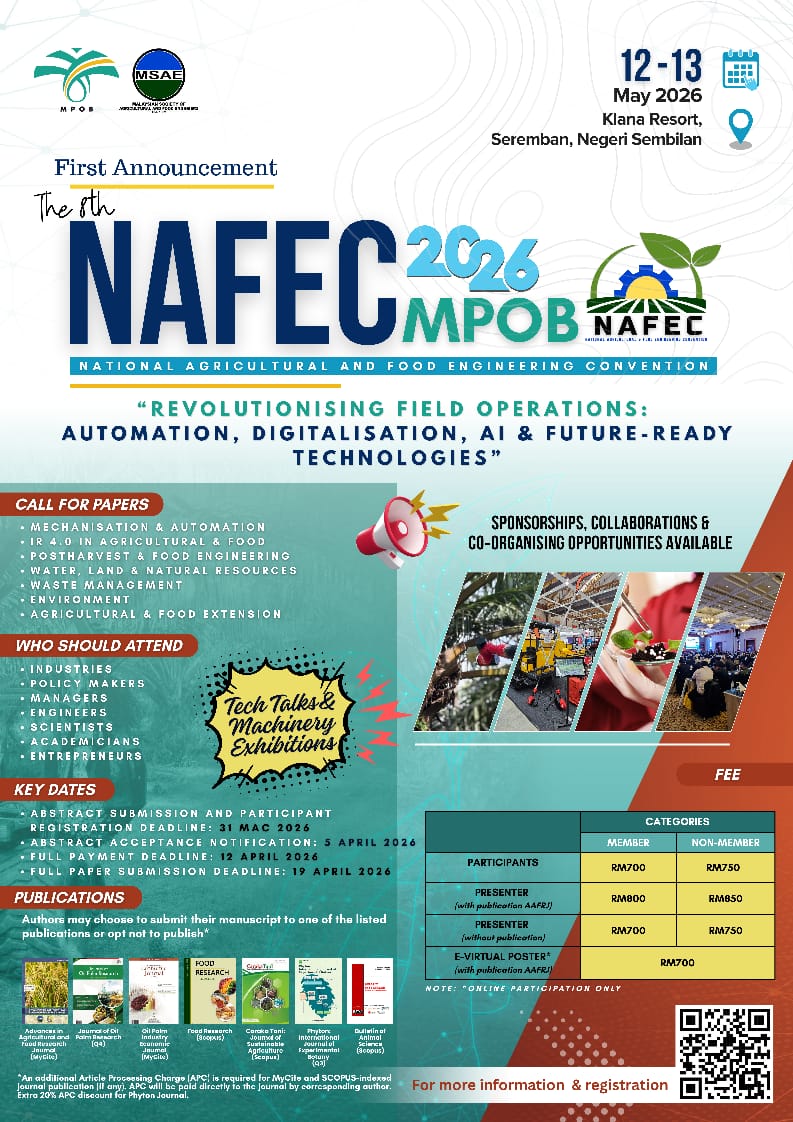Comparison of Grain Corn Production Performance Between Zero-Tillage and Conventional Tillage at MARDI Seberang Perai
DOI:
https://doi.org/10.36877/aafrj.a0000416Abstract
Grain corn is one of the ingredients for formulating animal feed, especially for poultry. Recently, Malaysia has given a higher priority for grain corn to be produced locally due to high import costs. Malaysia imported 3.7 million metric tonnes of corn worth approximately RM 3 billion in 2020-2021. However, locally produced grain corn faces high production costs. The main contributors to the high costs are mechanisation services and agricultural input. Agricultural input costs, such as seeds, fertilisers, herbicides, and pesticides, are very dependent on market prices that can go up or down and are difficult to control. Tillage, or land preparation, is the most expensive mechanisation service for grain corn production. Conventional tillage involves three operations; ploughing, harrowing, and rotary tillage. These operations cost at least RM900 per hectare. A zero-tillage planting system does not require any tillage. Therefore, a study was conducted to see the performance of zero-tillage as compared to conventional tillage in terms of final yield produced at MARDI Seberang Perai, Pulau Pinang. A randomised plot design experiment with 3 replications on plot sizes of 20 × 15 m each was used. All agronomic practices such as fertiliser requirement, pest and weed control, and irrigation were the same for both. The difference was only in the tillage practice where conventional tillage involved 3 tillage operations, ploughing, harrowing, and rotary tilling while there was no tillage operation needed for a zero-tillage planting system. The final yields were analysed using T-test statistical analysis. The yields recorded at 14 % moisture for zero-tillage and conventional tillage were 6.32 ± 0.9 and 6.62 ± 0.6 metric tonnes, respectively. No significant differences were found by t-test analysis with a p-value of more than 0.05. This shows that zero-tillage has the potential to be implemented in Malaysia to reduce the cost of grain corn production by eliminating tillage operations which can save up to RM900 per hectare. Further study for various types of soil shall be conducted to categorise suitable soil for the planting system.
Downloads
Published
How to Cite
Issue
Section
License
Copyright (c) 2024 Rohazrin Abdul Rani, Adli Fikri Ahmad Sayuti, Mohd Khusairy Khadzir, Muhamad Haniff Ahmad

This work is licensed under a Creative Commons Attribution-NonCommercial 4.0 International License.
Author(s) shall retain the copyright of their work and grant the Journal/Publisher right for the first publication with the work simultaneously licensed under:
Creative Commons Attribution-NonCommercial 4.0 International (CC BY-NC 4.0). This license allows for the copying, distribution and transmission of the work, provided the correct attribution of the original creator is stated. Adaptation and remixing are also permitted.

This broad license intends to facilitate free access to, as well as the unrestricted reuse of, original works of all types for non-commercial purposes.
The author(s) permits HH Publisher to publish this article that has not been submitted elsewhere.

.png)

.jpg)



